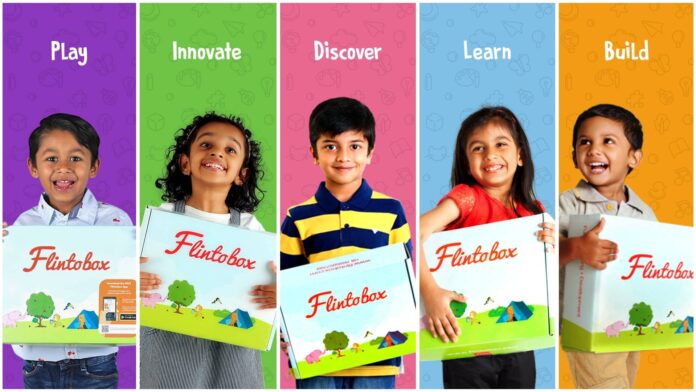It is often said that ‘Children learn as they play’ – the Chennai based e-commerce education start-up Flintobox has turned this into reality by selling toys conceptualised by educators, prototyped by designers, and manufactured by top-of-the-line printers, all shipped in a box to little customers every month.
Isn’t it an interesting concept of learning? Especially, if it is a box full of toys that can set your imagination soaring. “90 per cent of brain development happens by the age of six. Early experiences and positive interactions during age of 3-7 determine the overall development of children for years to come. However, in these busy days with nuclear families, parents don’t have the time to ensure that their children are engaged effectively. And this constraint makes children resort to the easy way of watching TV,” says Arunprasad Durairaj, Co- Founder and CEO of the company.
“Flintobox solves this problem for parents by providing a perfect fun discovery box that inspires children to explore and feed their curiosity for new things every month. Parents will receive, right at their door, a carefully crafted and designed set of activities based on fresh themes every month,” Durairaj adds further.

It is not only the kids who love the idea – their parents are also fascinated by this creation of the coolest start-ups in India. There are a lot of benefits that come attached with Flintobox, which altogether change the way of education and teaching. Each box contains 4-5 different activities that cover 12 development areas – including fine motor, cognitive and gross motor, creativity, exploration, language, and social skills through fun activities.
The story of Flintobox is that of a young parent striving to find the best way to nurture his kid’s creativity and curiosity, while keeping up with his own busy life. Vijay (co-founder) raised this concern that his 5-year old son Aadhav was spending a disproportionate amount of time on TV and mobile phones.
As with any busy parent, Vijay was pressed for the time to ensure his child was engaged in meaningful and purposeful activities. This is when we thought it would be a great service/product if someone could curate new activities and ideas which would engage kids positively, at home, away from TV, and without parent’s constant supervision.
We quickly brought in people with expertise in child development, game design and education to build the first prototype, which was then tested with 60+ parents and their children. We found that the parents and the children loved the freshness of the idea and the quality of the product. This encouraged the team to take a plunge to build Flintobox as a company.
What’s the USP of Flintobox? How do you see the growth scenario in coming years?
1. Value for Money: Children get 4-5 different activities/projects for Rs 895 per month under a 6 month subscription. The retail value of such a combination could be upward of Rs 1,500 as there are a lot of intermediaries involved.
2. Engagement: Rest of the companies do it for a wide range of 0-14; while Flintobox is building games and activities exclusively for 3-7 years aiming to be the pioneer in early child development.
3. E-commerce: For the largest toy companies in India, only 5-8 per cent of their sales happen online. We are a 100 per cent e-commerce company benefitting the new-age parents and children.
4. Convenience: We provide a lot of convenience for parents, since they can leave the job of curating the best for their kids with us.
Analysis:
This company does a wonderful job for incorporating learning into play through their purchasable toy box subscription. While this is an Indian-based company, such a concept could be replicable anywhere in the world. With parents’ busy schedules along with the daunting task of homeschooling their children, it’s a huge comfort to know their children are engaging in play in productive and educational way. It would be interesting to design a similar system in which toys can be used in conjunction with students’ virtual lectures as well. Also, how can a concept like this be accessible to families of any socioeconomic status?




